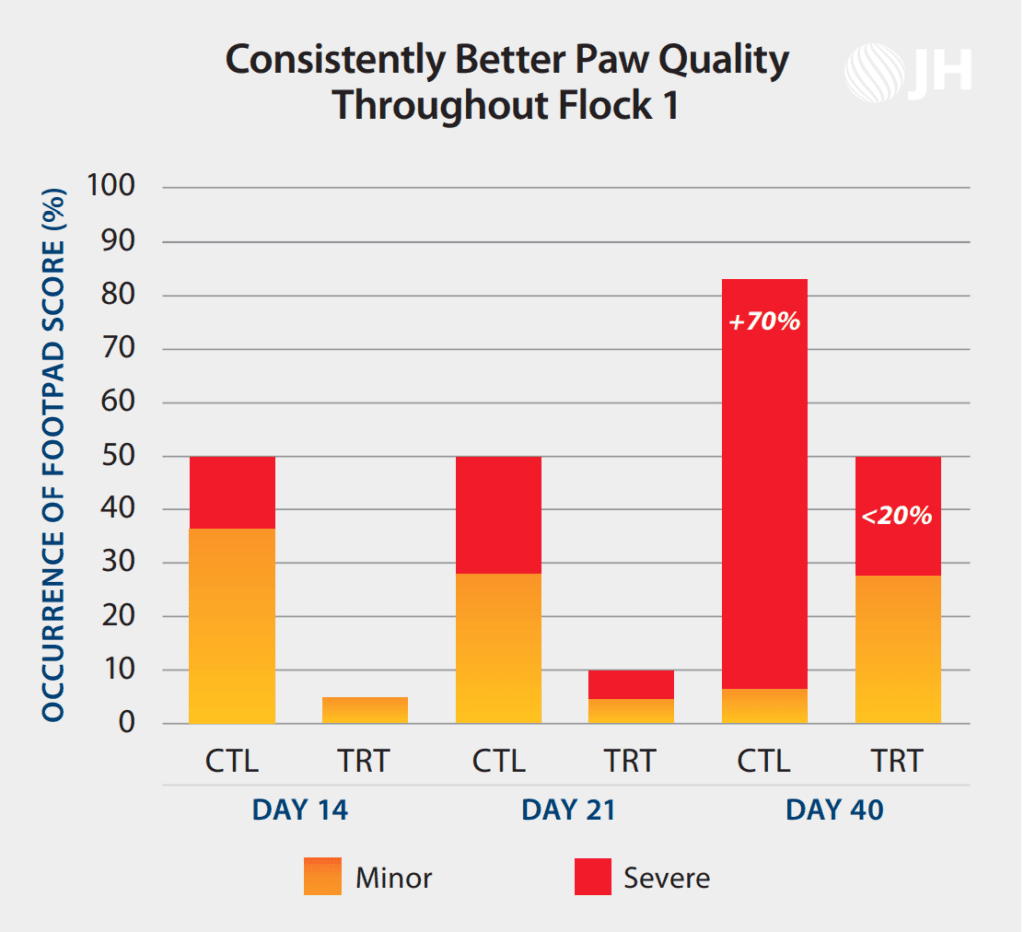A Three Prong Approach to Litter Moisture
The poultry house environment has a significant impact on the health and performance of birds. Few variables have such a broad impact as litter moisture. From its impact on house ventilation programs to ammonia generation and bird health, moisture has the potential to wreak havoc if left unchecked.
Litter Moisture and Cocci Cycling
Coccidiosis vaccination programs require birds to be exposed to several cocci cycles before full immunity can be achieved. While the first vaccination is given at the hatchery, birds need to ingest oocysts from the litter as their booster. That means an oocyst must be sporulated, a process that requires a minimum of 20-25% litter moisture content. Conversely, too much moisture can cause excessive sporulation, creating an overwhelming challenge to birds, possibly causing clinical coccidiosis. The target relative humidity (RH) is 50-70%, as this range should keep litter from caking.

Litter Moisture and Paws
Ammonia in the gas phase does not seem to be sufficiently irritating to paws to cause lesions, but ammonia in wet areas of litter is corrosive and can cause footpad dermatitis. Since broilers are in constant contact with litter, a key aspect of litter management is the removal of moisture.
A UGA study demonstrated a direct correlation between litter moisture and paw lesions. Over four flocks, drier, more uniform litter conditions achieved with the help of circulation fans showed improved overall paw conditions with a delayed occurrence of severe lesions. Compared to the control, houses with moisture levels in the target range had 50% less lesion occurrence at day 14 and consistently better paw quality throughout the flock (Mou 2020).


Litter Depth and Moisture
Recommended litter depth is 4-6 inches depending on bird size and density. Since built-up litter acts like a sponge, you need variable particle size to increase porosity and enable adequate moisture evaporation. A litte base with only small particle sizes will restrict air movement and therefore moisture evaporation. A tight, dry litter base will keep water at the surface, allowing cake to form. An overly wet or fluffy litter base allows water to wick to the pad. Once compressed by the flock, black, sticky hard pan can form.
If built-up litter has been windrowed over 1-2 years, the carbon to nitrogen ratio of the manure and organic material will be unbalanced. Top dress or incorporate a load of kiln dried shavings for best results. This helps rebalance the C:N ratio, litter particle size mixture and improve litter drying.
Need more insight on litter moisture and how to manage it for overall better house conditions? Contact the litter experts at Jones-Hamilton now to schedule a session. We know the Science of Litter Management®.

